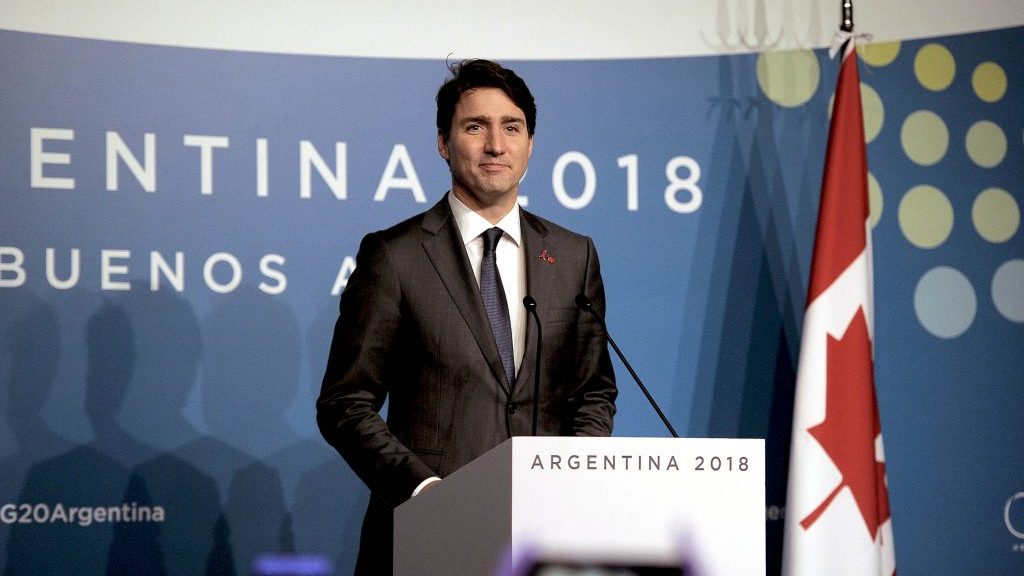Prime Minister Justin Trudeau ruffled feathers late last year when he made some comments that many people in the construction industry took to be unfairly critical of male workers.
During the G20 Summit in Argentina he said, “Well, you know, there are gender impacts when you bring construction workers into a rural area. There are social impacts because they’re mostly male construction workers. How are you adjusting and adapting to those? That’s what the gender lens in GBA (gender-based analysis)-plus budgeting is all about.”
This statement left several industry stakeholders scratching their heads and wondering what GBA+ is.
Created by Status of Women Canada, GBA+ is a program that analyzes what it calls the gender and identity implications of government policy.
In addition to “playing a leadership role in the government-wide implementation of GBA+,” Status of Women Canada works to advance equality for women in three priority areas: increasing women’s economic security and prosperity; encouraging women’s leadership and democratic participation; and ending gender-based violence.
Created in 1971 by the Liberal government of Pierre Elliott Trudeau, Status of Women Canada was upgraded in December 2018 to the Department for Women and Gender Equality, a full government department.
Status of Women Canada/the Department for Women and Gender Equality says GBA+ is an analytical process that is used to assess how diverse groups of women, men and non-binary people (a catch-all category for gender identities that are not exclusively male or female) may experience government policies, programs and initiatives.
The “plus” means GBA goes beyond biological (sex) and socio-cultural (gender) differences to take into account other identity factors, such as race, ethnicity, religion, age and mental or physical disability.
The federal government says GBA+ is not advocacy for women.
Instead, it is “an analytical process to help government ask questions, challenge assumptions and identify potential impacts, taking into account the diversity of Canadians.”
The government says a department’s mandate “could also impact your entry point for GBA+. You might begin with ethnicity, or with (dis)ability. Regardless of entry point, however, every human cell has a sex and every person is gendered, and sex and gender must not be neglected in your analysis.”
Federal workers must undergo mandatory GBA+ training so that they consider the implications of government legislation for the many aspects of equality and fairness.
The two-hour “introduction to GBA+ course” is online.
The Department for Women and Gender Equality and its GBA+ is not the only diversity and inclusion initiative in town.
There are many other organizations, large and small, in Canada that have similar mandates to pursue similar goals.
For example, the Canadian Centre for Diversity and Inclusion (CCDI), a national, non-governmental organization with offices in Toronto and Calgary, says its “mission is to generate awareness, provide education, and inspire action that results in positive social change in Canadian communities, schools, and workplaces.”
“We have more than 200 employer partners in the private and public sectors,” said Deanna Matzanke, CCDI’s senior director of ideas, insights and innovation. “I’m constantly amazed at the diversity of employers who are coming to us.”
In addition to research on various aspects of diversity and inclusion for the reports and toolkits that it produces, CCDI also does professional development training and instruction, assessment and strategy development.
While organizations like the Department for Women and Gender Equality and CCDI try to get individuals and organizations to support diversity and inclusion through programs and initiatives, other Canadian institutions, such as the courts and regulators, provide another kind of solution.
Seema Lal, principal at SHK Law Corporation in Vancouver, says there are a number of legal and regulatory remedies for complaints of sexual harassment and discrimination.
“The Canadian Human Rights Code applies to federally regulated companies and to federal government entities,” said Lal. “Complaints of discrimination based on sex or gender, for example, go before a federal tribunal.”
The vast majority of construction companies are regulated provincially, however, and provincial human rights codes, which are based largely on the federal code, apply to them.
Complaints of discrimination based on sex or gender go before a provincial human rights tribunal.
Allegations of sexual harassment and bullying are dealt with differently.
In B.C., the Workers Compensation Act deals with those complaints.
“Although provincial human rights and WorkSafeBC claims are separate, separate claims can be made for the same incident,” said Lal.











Recent Comments